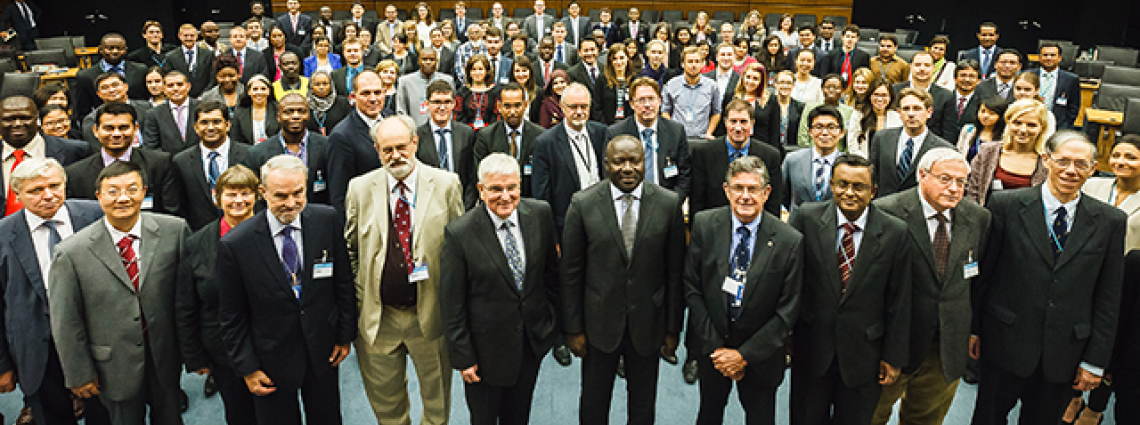CTBT Public Policy Course: Verification through Diplomacy and Science
Vienna, 12 September 2014
The course was part of the integrated capacity building approach of the Preparatory Commission for the Comprehensive Nuclear-Test-Ban Treaty Organization (CTBTO) and was made possible through financial support from the Kingdom of Norway, the European Union and the Swedish Radiation Safety Authority. Its main aim was to train and educate the next generation of Comprehensive Nuclear-Test-Ban Treaty (CTBT) experts by covering the policy and legal aspects of the CTBT, including its entry-into-force and universalization, as well as the CTBT verification technologies and the civil and scientific applications of monitoring data.
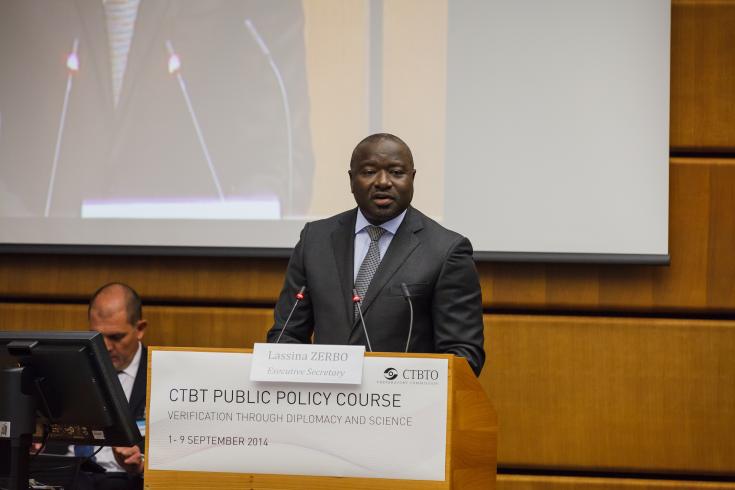
CTBTO Executive Secretary Lassina Zerbo
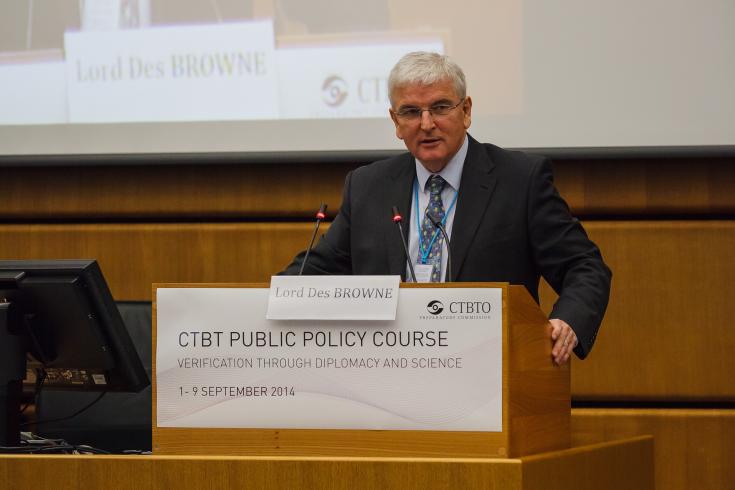
Des Browne, Vice Chairman of the Nuclear Threat Initiative, former UK Defence Secretary, and member of the Group of Eminent Persons (GEM)
I work for the Meteorology Office and we have a National Data Centre that is provided by the CTBTO. We receive seismology data from three stations in the area: from Bolivia, Colombia and Brazil. On a daily basis we receive data and if there’s an event where we’d like more data, we send a request to the CTBTO and they send us additional data, with which we can analyse and determine the location of the event, such as earthquakes.
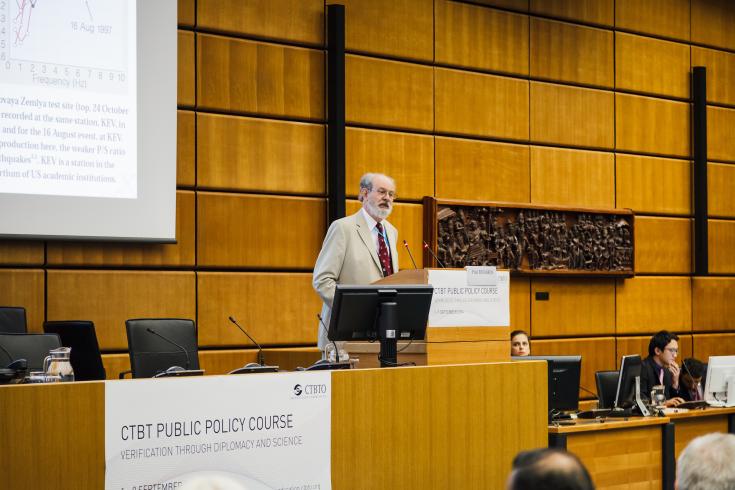
We need leadership: leadership from you, leadership from us, but also from the States that have signed the Treaty. Leadership to say it’s time to move forward and it’s time that the Treaty enters into force.
Des Browne, Vice Chairman of the Nuclear Threat Initiative, former UK Defence Secretary and a member of the Group of Eminent Persons (GEM), and Paul Richards, Professor Emeritus and Special Research Scientist at Columbia University’s Lamont-Doherty Earth Observatory, delivered keynote speeches on “Verification through diplomacy and science”.
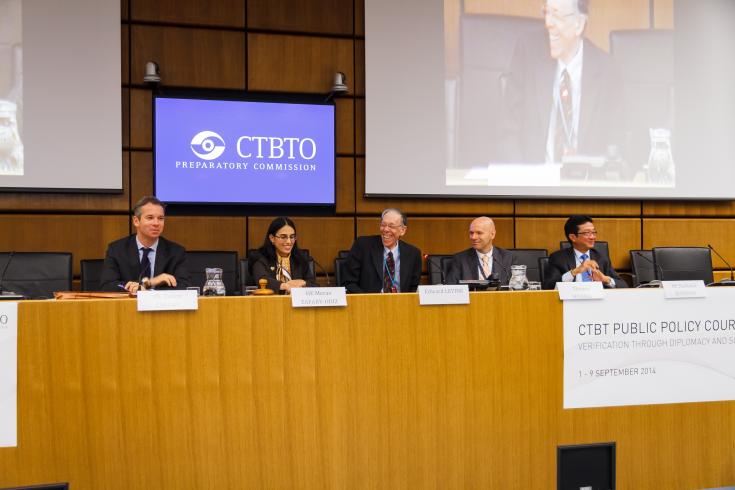
Panel discussion on “Challenges of Achieving Entry into Force”
The Comprehensive Nuclear-Test-Ban Treaty is a key piece for the global security architecture.
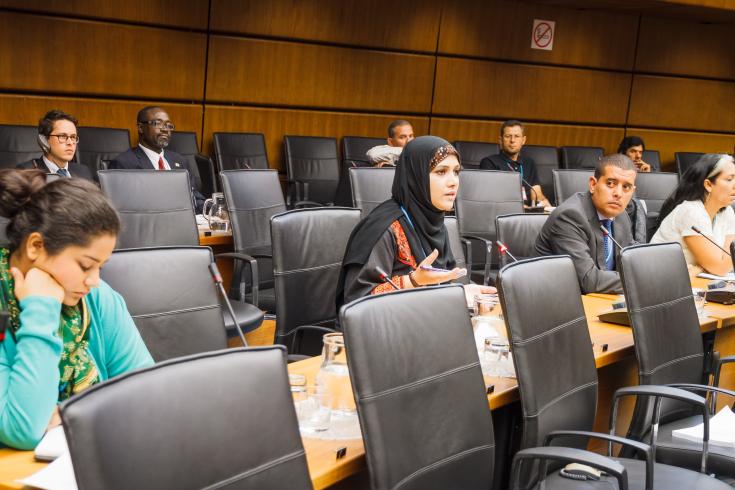
Participants also received a comprehensive overview of the CTBT verification regime, which ensures that no nuclear explosion goes undetected. The lectures covered a wide array of topics including the evolution of seismic monitoring, technology foresight and the sustainability of the verification regime, case studies on monitoring nuclear testing, and the use of monitoring data for civil and scientific purposes. Participants also had the opportunity to observe CTBTO data analysts at work.
I came in with a very modest knowledge of the organization and the Treaty text. It’s very helpful for me to understand the process of how the data arrives at and is processed by the International Data Centre and to learn the procedure that will be undertaken by the Executive Council once the Treaty enters into force, this really gives me a good overview.
CTBTO Executive Council simulation exercise
It was an amazing experience for all of us. I played the inspection leader, as the first time, I really enjoyed this experience and I learnt a lot. CTBTO is an active global institution for non-proliferation and for the nuclear test ban. Young leaders will go forward to ban all kinds of nuclear tests around the world.
12 Sep 2014
